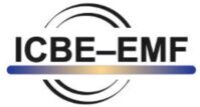New publication: WHO review on wireless and cancer is critiqued as seriously flawed
Scientific research links cell phone radiation to cancer
Yet another scientific critique of the WHO funded review on cell phone’s RF radiation and cancer has been published highlighting several errors, omissions, and conflicts of interests in the Karipidis et al. 2024 review that misleadingly offers cell phone safety assurances.

“A Critical Analysis of the World Health Organization (WHO) Systematic Review 2024 on Radiofrequency Radiation Exposure and Cancer Risks” by Lennart Hardell, Mona Nilsson (2025) was published in the Journal of Cancer Science and Clinical Therapeutics.
The paper focuses on the cancer risk of wireless radiofrequency (RF) radiation. Sources of RF include mobile phones, cell towers, Wi-Fi and wireless devices and networks.
Hardell and Nilsson state Karipidis et al. overlooked research showing increased risks for brain tumours in the most exposed groups, the most exposed part of the head, and longest latency time from first exposure to tumour diagnosis. Further, they state the “no risk” conclusions are based on selective inclusion of very few and low exposure studies.
Hardell and Nilsson document the numerous conflicts of interest of several of the authors of the WHO review and they also detail the major flaws in studies that the review relied on such as the industry financed Danish cohort.
“Ties to industry are a potential bias that may influence the scope, design and performance of research. Industry sponsored research is more likely to present a result favourable to the industry.”
Hardell and Nilsson call for a retraction of the paper. They detail the scientific evidence indicating that scientific research finds increased cancer risks of cancer, contrary to the WHO funded safety assurances.
“This WHO evaluation is contradicted by scientific results that show increased risks of cancer from exposure to RF-radiation from mobile and cordless phones, transmitters, and base stations. Other scientists have concluded, after reviewing the available evidence, that RF-radiation may increase the risk of cancer.”
“This article analyzes the Karipidis et al review and highlights several errors, omissions, and conflicts of interests that may explain the conclusions of no cancer risk. The flawed evaluation of scientific facts should lead to retraction of the article.”
This newly published review echoes the critique published by the International Commission for the Biological Effects of Electromagnetic Fields which also documented the inaccuracies and conflicts of interest in the WHO funded review.
Read “A Critical Analysis of the World Health Organization (WHO) Systematic Review 2024 on Radiofrequency Radiation Exposure and Cancer Risks” by Lennart Hardell, Mona Nilsson (2025).
Co-author Dr. Lennart Hardell is an ICBE-EMF expert. He has a long career as both a physician oncologist and as a cancer epidemiologist and has published more than 380 peer-reviewed scientific articles. Dr. Hardell was an invited member of the scientific working groups of the WHO International Agency for Research on Cancer evaluation of RF. Watch him present on the human epidemiology studies of cell phone and cancer risk in the video below.
